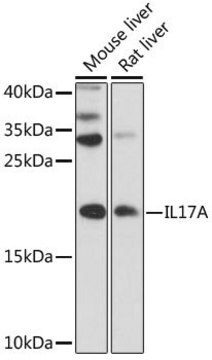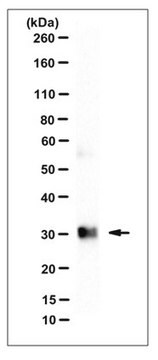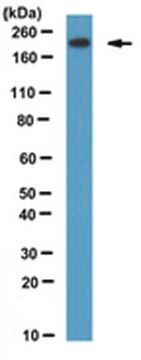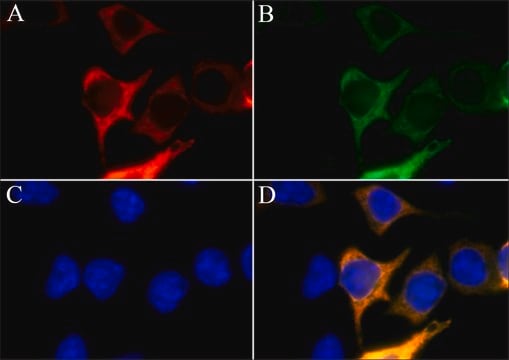MABS274
Anti-LRP6, clone A59, Ectodomain Antibody
clone A59, from mouse
Synonim(y):
Low-density lipoprotein receptor-related protein 6, LRP-6
About This Item
Polecane produkty
pochodzenie biologiczne
mouse
Poziom jakości
forma przeciwciała
purified immunoglobulin
rodzaj przeciwciała
primary antibodies
klon
A59, monoclonal
reaktywność gatunkowa
human
metody
flow cytometry: suitable
immunocytochemistry: suitable
immunoprecipitation (IP): suitable
izotyp
IgG1κ
numer dostępu NCBI
numer dostępu UniProt
Warunki transportu
wet ice
docelowa modyfikacja potranslacyjna
unmodified
informacje o genach
human ... LRP6(4040)
Powiązane kategorie
Opis ogólny
Immunogen
Zastosowanie
Immunoprecipitation Analysis: A representative lot from an independent laboratory immunoprecipitated LRP6, Ectodomain from Wnt3a-treated HEK293T cell lysate (Yasui, N., et al. (2010). J Immunol Methods. 352(1-2):153-160.).
Immunocytochemistry Analysis: A representative lot from an independent laboratory detected LRP6, Ectodomain in HeLa S3 cells (Yasui, N., et al. (2010). J Immunol Methods. 352(1-2):153-160.).
Signaling
Insulin/Energy Signaling
Jakość
Flow Cytometry Analysis: 2 µg of this antibody detected LRP6, Ectodomain in 1X10E6 HEK293 cells.
Opis wartości docelowych
Postać fizyczna
Przechowywanie i stabilność
Inne uwagi
Oświadczenie o zrzeczeniu się odpowiedzialności
Not finding the right product?
Try our Narzędzie selektora produktów.
Kod klasy składowania
12 - Non Combustible Liquids
Klasa zagrożenia wodnego (WGK)
WGK 1
Temperatura zapłonu (°F)
Not applicable
Temperatura zapłonu (°C)
Not applicable
Certyfikaty analizy (CoA)
Poszukaj Certyfikaty analizy (CoA), wpisując numer partii/serii produktów. Numery serii i partii można znaleźć na etykiecie produktu po słowach „seria” lub „partia”.
Masz już ten produkt?
Dokumenty związane z niedawno zakupionymi produktami zostały zamieszczone w Bibliotece dokumentów.
Nasz zespół naukowców ma doświadczenie we wszystkich obszarach badań, w tym w naukach przyrodniczych, materiałoznawstwie, syntezie chemicznej, chromatografii, analityce i wielu innych dziedzinach.
Skontaktuj się z zespołem ds. pomocy technicznej








